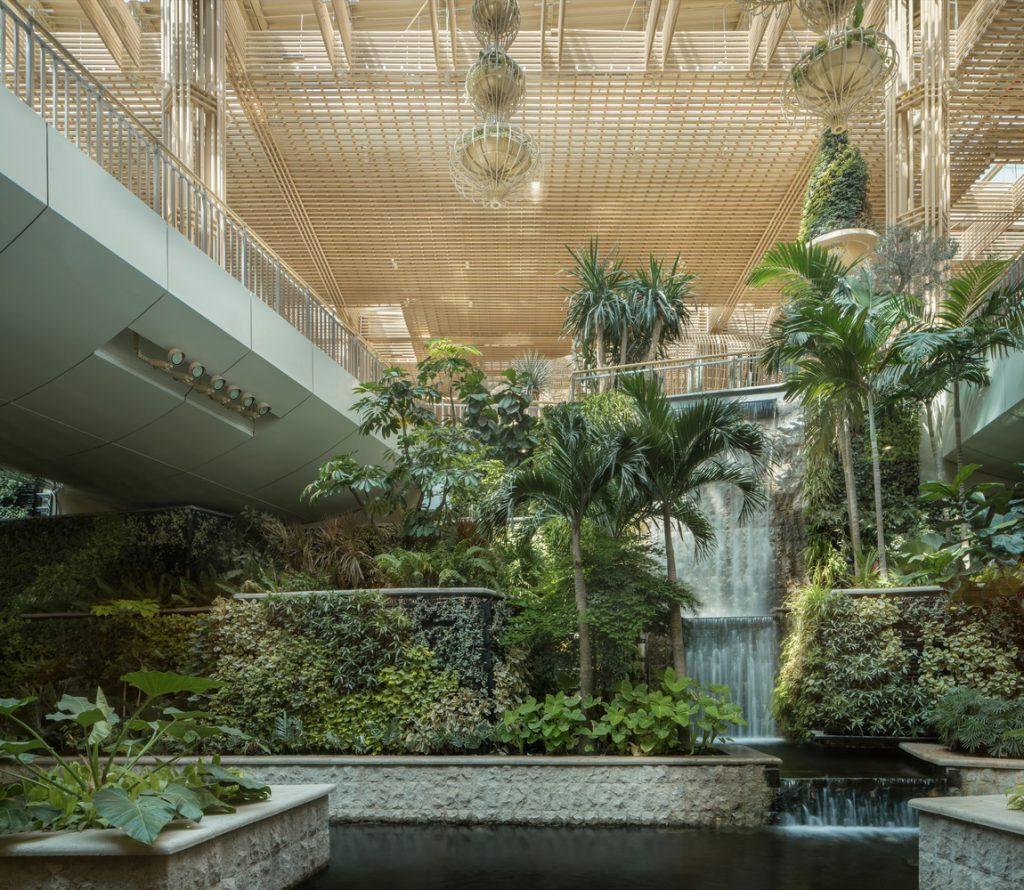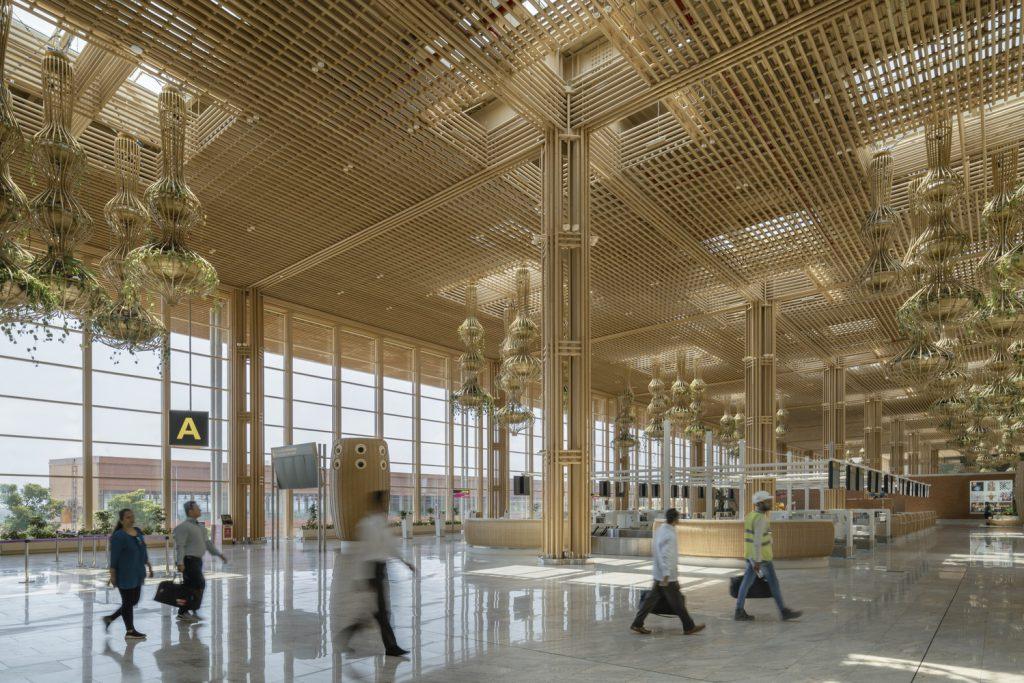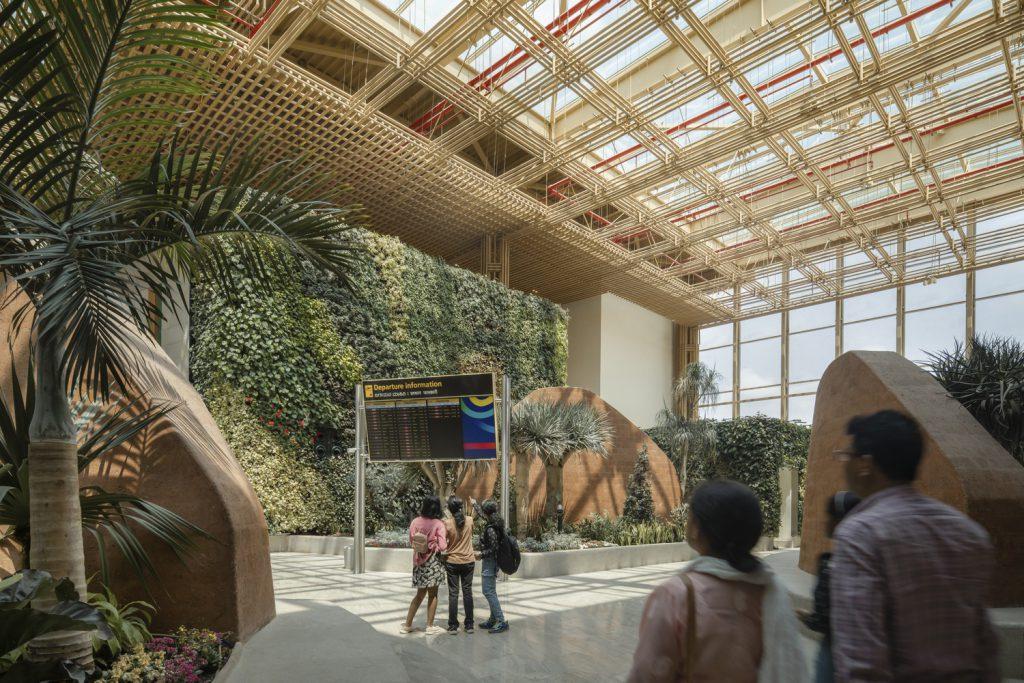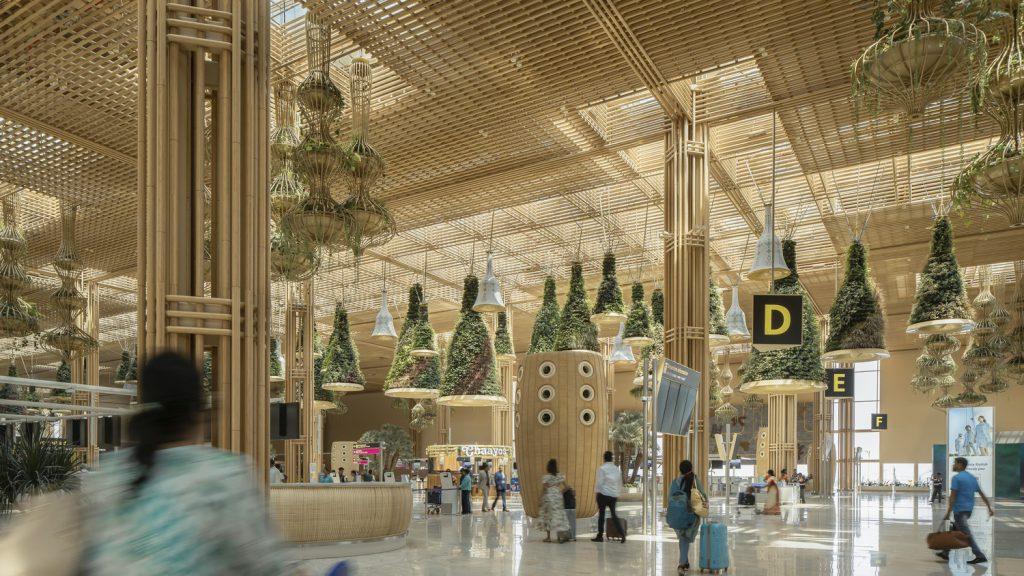Terminal 2 at Kempegowda International Airport in Bengaluru, India, has been remodelled. Travellers can now enjoy a beautiful garden in the terminal – the idea came from the New York architecture firm SOM.
Bengaluru, or Bangalore, was once known as the “Garden City of India”. The reason: the numerous public parks and the wide range of local fauna, nurtured by the temperate climate. Nowadays, however, the capital of the state of Karnataka in the south-west of the subcontinent has another image; it is known as the Indian Silicon Valley. Anyone who wants to enter the software development industry in India and cannot afford to go abroad moves to Bangalore. With a population of around 14 million, the city is now the third largest in India after Mumbai and Delhi.
However, the intensive connection to nature and the lush greenery of the metropolis was retained. Architecturally too. The New York office SOM has now redesigned Terminal 2 at Kempegowda International Airport .The concept was developed from Banaglore’s nickname: Garden City. “The streets in Bangalore are often lined with trees, and the city has a rich history of landscape design,” says Laura Ettelman, the project’s managing partner.

Green, green, green
From arrival to boarding, travellers are surrounded by a world of trees, plants and flowers that not only hang from the ceiling but also grow on the walls. Instead of traditional planters on the floor, the architecture firm, together with landscape architects Grant Associates and designers Abu Jani and Sandeep Khosla, decided to hang plants and flowers from the ceiling, making the interior more flexible. These “hanging gardens” not only create a unique atmosphere, but also allow plenty of daylight into the interior. At the same time, they also serve as signposts for the flying guests.
The roof construction of the terminal is one of the lightest in the world, according to SOM. A steel frame construction resting on steel columns was built above the check-in and the shops. These are spaced 18 metres apart and are clad in bamboo. Long steel beams were also used for the gates, with the supporting columns positioned at the edge of the rooms. The paths and the view for travellers thus remain barrier-free. On the lower floors, a concrete structure ensures that large rooms can be created without pillars. This makes the areas for baggage reclaim and passenger arrivals spacious and open.

The terminal adapts
Sustainability played a central role in the overall concept. Even before the opening, the project had already received LEED Platinum certification from the US Green Building Council and Platinum certification for sustainable architecture and design from the Indian Green Building Council. And so the terminal’s energy supply is guaranteed by renewable energies such as solar panels. Rainwater is also collected, treated and then used to irrigate the planting in the indoor and outdoor areas.
As Indian airports operate around the clock, it is all the more important that the terminals are designed in such a way that they can react flexibly to the daily fluctuation in air traffic. In the case of Terminal 2, this means that the gates are designed in such a way that either one large aircraft can be used for international flights or two smaller aircraft for domestic flights.

Enough space for everyone
The terminal now has a size of 255,000 square metres and has been dimensioned so that 45 million passengers can travel through the terminal each year. Part of the SOM-Team had previously worked at Chhatrapati Shivaji International Airport in Mumbai. This helped the architecture team to understand how best to take Indian culture into account when planning transport buildings. In India, for example, it is customary for families to accompany travellers to the airport. And so SOM designed a large, covered square between the transit hub and the terminal where families can sit and say goodbye to travellers.
Bangalore is one of the fastest growing cities in India and so Terminal 2 is an attempt to create a gateway that showcases the city’s culture and natural landscape to arriving and departing travellers, making it memorable.
Text: Resi Reiner
Fotos: Ar. Ekansh Goel © Studio Recall


iThere are no comments
Add yours